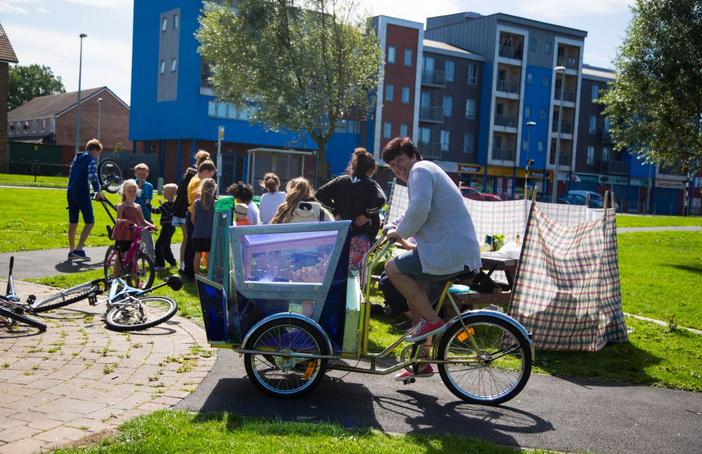Blog Post
Uncovering the learning of the Creative People and Places programme
Researcher Ruth Melville reflects on what Creative People and Places has achieved so far and where the real challenges lie

When I took on writing a document attempting to draw together learning from two years of the Creative People and Places (CPP) programme, I knew it wouldn't be an easy task.
Having been part of the evaluation team for Transported, plus attending the CPP network national conference, I'd come across the range of approaches offered, and heard stories from people involved at all levels.
At the conference, the difference a year or two of operation makes was immediately obvious from listening to the reflections of Janet Bellis, a community member from Appetite in Stoke-on-Trent (set up in the first tranche of the programme), as she looked back to the beginning of her community's involvement. Compare this to the places funded in the third round, (including Market Place in Fenland and Forest Heath where I've just started as a Critical Friend), who are focused on generating ideas and working with their consortia to get the programme up and running.
It wasn't until I read all the documents, and had informal conversations with people in the CPP network of projects, that I really grasped the amount of work that has gone on and the differences already made. There is such an energetic mass of activity not immediately visible to the casual observer.
I suppose what shocked me most was the very complexity of the approaches taken within the network. The inclusion of the 'experimentation and learning' element of CPP, along with devolution of programming to local places, led by a consortium of mainly local organisations, has allowed the blooming of locally distinct programmes. These respond to local interest, opportunity and need – allowing flexibility that one national approach would not have had.
Reading beyond the headline aims and initial findings, I realised that what CPP is challenging isn't anything as simple as people not attending all the art on offer in their area. The real fight is against years of under-investment and lack of significant engagement by the established arts sector with the culture of their communities, and only fractured attempts to commission and programme around what is meaningful to people in any locality.
The idea of being able to sum up a range of 'outcomes' within a short timescale for a programme like this is clearly problematic. In any programme, impacts on arts engagement levels would take a while to show. Compiling data from 21 programmes, each with their own monitoring systems and timescales, is not an easy task for the meta-evaluation. Indeed, meta-evaluation has itself proved a somewhat cumbersome way of approaching evaluation to date.
However, as CPP evolves, the changes need to be slow and deep, sustained over several years, and embedded in local interests beyond the local delivery mechanisms.
With this in mind, these would become the indicators of change:
- Are people really getting involved in co-commissioning and co-producing excellent work?
- What sort of partnerships are forming, how are they managed and how effective are they at overcoming the inevitable challenges that arise?
- Are key people are taking risks, learning from them and sharing that learning together?
My answers, so far and in brief, are:
- Many interesting attempts, let's see the final outcomes
- With some exceptions, the indications are that partnerships are looking good and proving robust
- Yes, with amazing frankness and trust internally, and it's beginning to get going externally too.
And is it new? Well, CPP isn't necessarily doing any one thing that is new. Places are experimenting with and adapting techniques and approaches in their areas that have been used effectively for years. But not on such a large-scale, or with both the backing of a national programme and the level of peer support and sharing across the network.
Our document Building Whilst Flying attempts to give a whistle-stop tour of some of the steps taken on the way, and signpost learning and ideas that might be useful to people within and beyond the network.
But perhaps the biggest learning is in the value of sharing and learning, of taking the time to get to know an area and programme, to build good strong partnerships that can withstand the inevitable challenges of poor resourcing and different priorities.
The challenge for the programme is to find a way to ensure that these elements are built into all delivery, well beyond the end of Creative People and Places.
Ruth Melville, researcher and co-writer of Building Whilst Flying: learning from the Creative People and Places programme
Image: LeftCoast Growing People project on the Mereside housing estate. Photo: Jack Boniface







